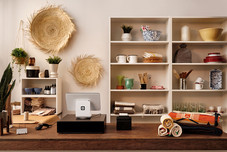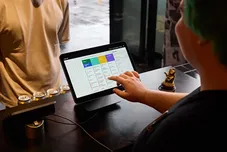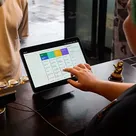Table of contents
If your business operates both online and in a brick and mortar store, it can be hard to keep track of inventory. Often, people order products online, only for the retailer to discover they don’t actually have the stock in store. Which can be frustrating for both retailer and customer.
For most retailers, paying attention to stock amounts is the only way to prevent that from happening. Stocktaking, as we call it here in Aus, is the process of counting all your merchandise and matching it up with your inventory records to spot any differences. If the amount isn’t the same, it can lead to missed sales, logistical issues, and, ultimately, a disappointing customer experience.
Stocktaking is backbreaking work, but it’s essential, particularly if you sell across multiple channels and locations. The pandemic has changed a few things about physical inventory counting, but it’s also made it even more critical as businesses get creative with what and where they’re selling.
What’s the purpose of stocktaking?
The goal of stocktaking is to make sure your in-store inventory totals match your records. If you use a retail POS system, you can compare your inventory count with the levels recorded in your POS software.
Accurate inventory has a domino effect, allowing you to make better decisions on what to stock up on, submit timely purchase orders, and reveal and resolve issues more efficiently.
Even if you use inventory management software, you may still be required to take stock for tax purposes. Retailers typically conduct a full stock count at the end of the financial year in June or in the beginning of the new financial year in July. This is when inventory is lower, so quantities are more accurate for end-of-year tax reporting.
Inventory counting best practices
It’s important to pay attention to the products that are most popular with customers, so stocking, purchasing, and fulfillment happen seamlessly and don’t prevent any sales. This is particularly important these days, as supply chain disruptions have created longer lead times for certain industries.
You want to make sure your inventory is right with the things that are selling really well.
Here are a few more best practices that can help you make the counting process more efficient.
Find a slow block of time
Typically, stocktaking requires you to shut down your store so you can pull your products out, count them, and note the quantities. Do this after hours so you aren’t forced to close temporarily.
If you need to do your inventory count during normal business hours, choose a slower time, and make sure you proactively tell customers your store will be closed. You can update your voicemail message, revise your hours on your Google business profile, post on social media, send out an email, and add physical signs to your store window.
Use a retail POS system and barcode scanner
You can count your products by hand, with inventory count sheets, or you can use a barcode scanner to read your SKU or UPC codes and then send the information to your retail POS system. Using a scanner is quicker than inventory count sheets as you don’t have to take time to manually write down the quantities. It also prevents counting errors, since you don’t have to do any counting yourself before adding those tallies to your software.
Make it easy for staff to do on their own
Stocktaking can be hard to do while social distancing. You may also have to clean your merchandise after it’s been handled by employees. You might give employees specific items during their shift so people don’t overlap. That way, employees have set tasks and can keep their distance while they’re counting.
Regardless of where you are located, if you can adhere to social distancing within your store, you should do so. With staff members, you can make it easier for them to work on their own by organising your floor and back room so all items are labelled, and in their correct spots. This saves time going back and forth trying to find items, and it allows each staff member to stick to their own area as much as possible. You may even want to create a store map that includes the locations of all displays, windows, shelves, racks, mannequins, drawers, and other areas your team will need to access to find the stock they are counting.
Arrange your items so they can be scanned quickly
You also want your merchandise to be scannable. Lay your items so bar codes are facing out, making them easier to read with a barcode scanner.
For apparel, pull out tags before scanning, and then slide the item over once it’s been counted. For smaller products, like tool parts or jewellery, one approach is to have two bins out and place the scanned items in the empty bin once the count is done. Think about what works for your store, and go with that.
Assign the task to employees who know what you sell
Stocktaking can be tedious and time consuming, so you want to make sure the employees you select can do the job accurately. Choose employees who have attention to detail and a solid understanding of your product catalogue. If you don’t have the time or staff, you can actually hire an inventory counter to come in and conduct the count for you. Hiring an outside individual or firm to count inventory is more expensive, but it’s common for businesses with larger stock levels, like those with distribution centers.
To enhance morale, you may want to consider providing your team with free meals or snacks during the stocktaking process, spot bonuses, or other types of rewards.
Have a post-mortem
When you’re done with the full inventory count, update your records in your POS system with the actual quantities, names, and prices of your stock. Then analyse the results. Which products were off and why? Are there any patterns, perhaps with a specific type of item or at a certain location in your store? The reports in your retail POS system can make the analysis part of stocktaking easier.
While a full inventory count may sound overwhelming, smart inventory management is what makes your business more efficient, allowing you to sell in the ways that work best for you and your customers. And it doesn’t happen overnight.
![]()











